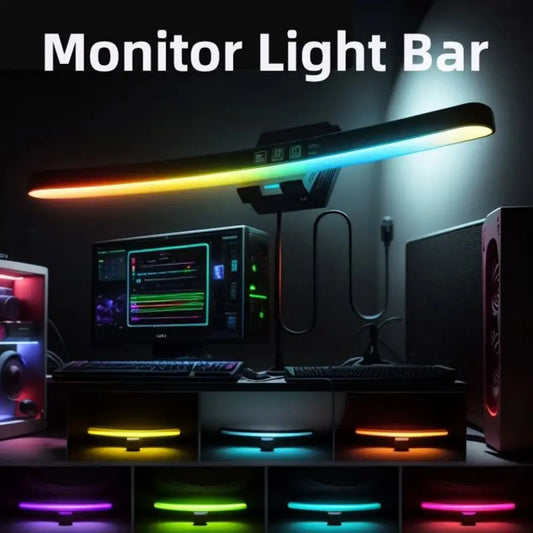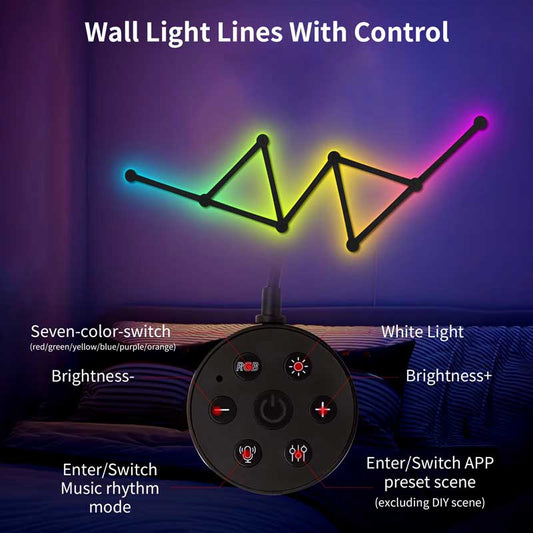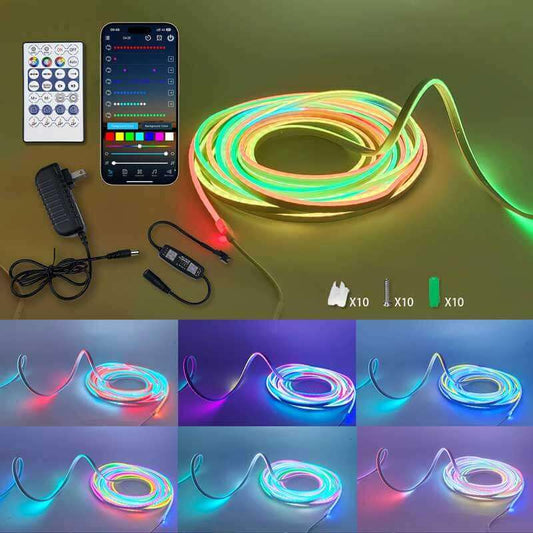What is the difference between LED and integrated LED?
Share
When shopping for lighting solutions, it’s crucial to understand the difference between LED and Integrated LED lights, as they serve different purposes and come with their own set of advantages and considerations. Here’s an analysis of both types to help you make the best decision for your lighting needs.
1. What is a Traditional LED Light?
A traditional LED light typically refers to a standalone LED bulb that fits into a compatible fixture. These bulbs are available in different shapes and sizes, and they work with standard fixtures such as lamps, ceiling lights, and sconces.
Advantages of Traditional LED:
- Flexibility: You can use traditional LED bulbs in almost any compatible fixture that requires a standard bulb socket (E27, GU10, etc.).
- Replaceable: Traditional LED bulbs can be easily replaced once they burn out, which means you don’t need to replace the entire fixture or lighting setup.
- Variety: These bulbs come in many types, including dimmable, color-changing, and smart versions.
When to Choose Traditional LED:
- If you want the flexibility to switch bulbs and fixtures.
- If you need a budget-friendly, easy-to-install solution.
- If you have an existing fixture and just want to upgrade to LED for energy efficiency.
2. What is an Integrated LED Light?
An integrated LED light, also known as an LED panel light, LED ceiling light, or LED fixture, comes with the LED light built directly into the fixture. The LED components are integrated into the housing and cannot be replaced individually. Once the LED in the fixture fails, the entire fixture typically needs to be replaced.
Advantages of Integrated LED:
- Sleek Design: Integrated LEDs often feature a modern, minimalist design that integrates well with contemporary interiors. They are perfect for ceilings, under cabinets, or as downlights.
- No Maintenance: Since there are no separate bulbs to change, integrated LEDs offer a more hassle-free solution.
- Long Lifespan: Most integrated LEDs last 50,000 hours or more, reducing the need for frequent replacements.
- Energy Efficiency: These lights are typically designed to maximize energy efficiency, so they use less power compared to traditional lighting setups.
When to Choose Integrated LED:
- If you're designing a new space or are in need of a complete lighting fixture.
- If you prefer a low-maintenance lighting solution that doesn’t require replacing bulbs.
- If you want a sleek, modern look for your home or office space.
3. Key Differences Between LED and Integrated LED:
| Feature | Traditional LED | Integrated LED |
|---|---|---|
| Replaceability | The bulb is replaceable in most cases. | The LED is built into the fixture, so it is not replaceable. |
| Installation | Works with existing fixtures that support LED bulbs. | Comes as a complete fixture and needs installation. |
| Design | Typically offers a wider variety of bulb shapes and sizes. | Sleek, modern, and typically designed to be part of the space. |
| Longevity | Lasts a long time but is not integrated into the fixture. | Offers longer lifespan as part of a unified fixture design. |
| Energy Efficiency | Highly efficient, but depends on the type and fixture used. | Usually more energy-efficient, as they are optimized for the fixture. |
| Cost | Typically more affordable upfront. | Generally more expensive due to the integrated nature. |
4. How to Buy:
-
Traditional LED Lights:
- Where to Buy: You can find traditional LED bulbs at most hardware stores, online marketplaces like Amazon, and specialized lighting retailers.
- What to Consider: Check the bulb's wattage (for brightness), color temperature (warm or cool light), and compatibility with your fixture. Make sure the bulb is dimmable if you want that feature, and check the bulb’s lifespan for long-term savings.
-
Integrated LED Lights:
- Where to Buy: Integrated LED fixtures can be found in home improvement stores, online retailers, and specialized lighting stores. Many websites also offer integrated LED lights designed specifically for ceilings, under-cabinet lighting, and other purposes.
- What to Consider: Make sure the fixture is the right size and style for your space. Consider the design (flush mount, recessed, pendant, etc.) and the color temperature of the light (2700K for warm or 5000K for cool). Additionally, check if the integrated LED comes with a warranty or a replacement option.
5. What to Consider Before Purchasing:
- Energy Efficiency: Whether it’s a traditional LED bulb or an integrated LED fixture, always check the energy rating to ensure it meets your efficiency needs.
- Brightness (Lumens): Make sure the light output is appropriate for your space. More lumens mean brighter light.
- Installation Needs: Traditional LED bulbs are easy to install, whereas integrated LEDs may require professional installation, especially if you’re installing recessed lights or large fixtures.
- Aesthetics: Integrated LED fixtures often provide a more modern look, while traditional LEDs are a great choice if you're working with existing fixtures and want to update to energy-efficient lighting without replacing everything.
- Warranty & Lifespan: Consider the warranty on both traditional and integrated LEDs. Most have a long lifespan, but make sure the warranty covers issues like failure due to manufacturing defects.
Conclusion:
Choosing between traditional LED lights and integrated LED fixtures depends on your specific lighting needs and preferences. If you're looking for flexibility and easy bulb replacement, traditional LEDs are the way to go. However, if you're after a sleek, modern look with fewer maintenance concerns, integrated LED fixtures are the better choice.
Recommendations:
- For Traditional LEDs: Brands like Philips, Cree, and GE offer a wide range of quality LED bulbs.
- For Integrated LEDs: Consider brands like Acuity Brands, Lithonia Lighting, or Halo for high-quality integrated LED fixtures.
Ultimately, it’s all about finding the right lighting solution that matches your space, style, and energy efficiency goals.




